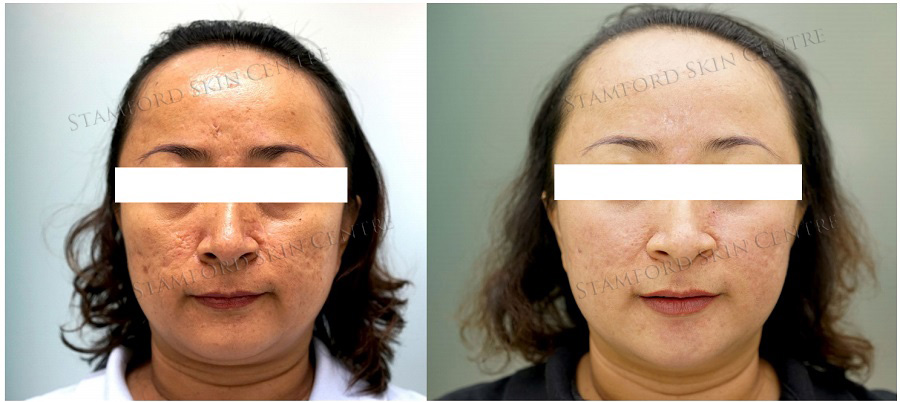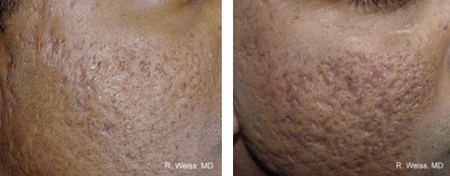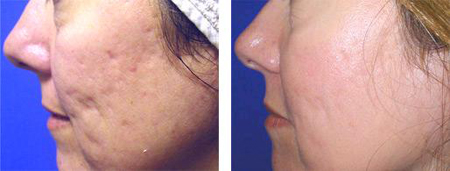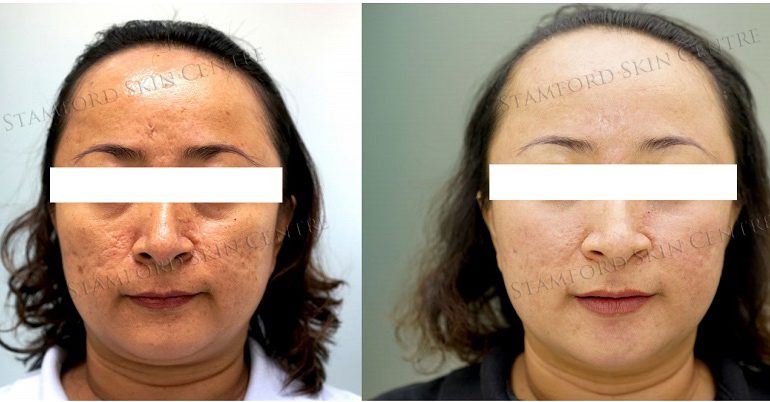
Dermabrasion is a treatment that involves physically scraping off the top layer of skin. After deep dermabrasion treatments, time off from work or school is needed for recovery. This method removes acne scars very effectively. The less invasive approach, microdermabrasion, scrapes off a very thin layer and doesn’t require recovery time away from work or school.
Some of the acids used for acne treatment are used as acid peels to remove scar tissue. It takes about a week for the skin to heal after these treatments, and there is often reddening and discomfort during the healing process.
Another scar removal approach involves collagen injections. Collagen, a protein, is a natural component of human tissue. When collagen is injected underneath the scar, it raises it to the level of the surrounding skin. This restores a normal appearance. Collagen breaks down over time, and the treatment may have to be repeated periodically.
Cultured autologous fibroblasts are living cells that the dermatologist injects under the patient?s skin. These cells, taken from other parts of the patient?s body, are grown in a laboratory culture until there are enough of them for the procedure. Once in place, they build up under the scars and raise them to the surface. Each area is injected once every 2 weeks for a total of three injections. Many patients experience long-term improvement.


